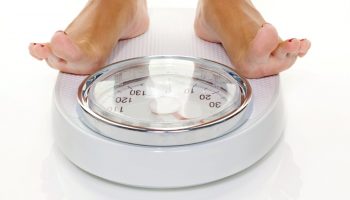What someone considers a vitamin, others think of it as a bogeyman. This article will tell you everything you need to know about the safety of taking creatine when workout. Now, you won’t have a reason to be scared of this “King of performance” supplement.
Without a question, creatine happens to be one of the most popular fitness and workout supplements today because of its several benefits. Considering the fact that many people and professional bodybuilders associate it with their body composition improvement many consider this “treat” as a food due to its efficiency. They feel the greater muscle growth, power and strength as a result and most study papers backs this fact up.
Researchers are interested in creatine and how it interacts with diverse medical conditions and sports settings, therefore, creatine is one of the most researched add-ons today. If you’re scared of this supplement and what side effects it may have, the chances are that those side effects have been studied in a lab setting.

We’re going to be brutally honest with you about: is taking creatine safe and what it can or cannot do to your kidneys, liver or heart so we have to mention first what the existing research says about taking this supplement.
To start with the side effect – Yes, this supplement can cause fluid retention and this is not a big surprise. Studies have shown that unless you have some specific concerns this is not treated as a medical issue.
If you worry about that you’re going to look bloated, we’ll piece your mind by saying that fluid retention will happen only in your muscles, so basically they’re going to look a little bit bigger (actually, this is one of the things most bodybuilders do before their contest preparation).
If someone tells you that you will cause your muscles only to retain water and that creatine generally has no value, don’t believe the story. Your muscles already contain 70% water and that is without the creatine. Creatine only can add up more volume to your muscles. Think of it this way – if you suck out all the water from your muscles what will you get? – Wrinkly little hands! So, don’t worry about it – it’s not dangerous.
Another side effect is a stomach distress, but this can happen only if you took too many supplements through the day at empty stomach. It can be solved by food intake or increase your water intake and definitely take smaller doses.
Diarrhea is also another side effect that bodybuilders usually have if they take more supplements in a single dose. There’s no way to solve this fast as your body can’t absorb creatine in high quantities, therefore rest for the day and take smaller doses.
All in all, creatine can’t cause big side effects, but you need to learn how to use creatine and how much is safe to take daily.
How much Creatine is Safe to Take Daily
It’s scientifically proven that the human body can absorb well around one to three grams of creatine. Generally, your body will better react to smaller dosages than to the bigger ones when absorption decreases. Even if you take too much, your body will absorb it eventually (slower, but it will) that is why you cannot overdose on this supplement.
Another great thing is that the Creatine Monohydrate has been made in small sizes (such as Creatine Monohydrate 200 Mesh) which provides much faster absorption. Creatine Monohydrate has been proven to improve a muscle volume, speed and general performances of athletes. Its serving size is usually 5 grams, which is advisable by professional medical researchers and safe amount of creatine per day. If you decide on using it we suggest you can take it one to two times per day when you take your regular post or pre workout shakes which is something most professional athletes and bodybuilders do.
It is advised to take creatine supplements for muscle growth through a “loading phase”, a well known bodybuilding term and to have at least eight to twelve glasses of water daily when using it. Creatine Monohydrate has zero calories and is safe to use with other supplements. Taking it with dextrose monohydrate (sugar) will maximize the absorption and gain better results.
Is Creatine Safe for Teenage Athletes?
Creatine can be found in many high protein foods naturally (chicken, fish, red meat) and is a 100% natural product, therefore it’s safe for teenagers to use it.
Another interesting fact is that the Mayo Clinic’s sports medicine physician Jay Smith interviewed students in more than 300 high schools for his study research and found that 8% of students and teenagers are using creatine on a regular basis and never had any side effects.
Some of them experienced dehydration, but this is because they didn’t follow the instructions and took enough water intake or took too big of a dose which their body processed slowly.
Teens frequently exceed with the safe creatine dosage that is recommended so manufacturers take more caution and time to educate young athletes who want to become “strong and big” on how to take creatine properly.
Is Creatine Safe for Women?
Creatine will work if you work out. Basically, it will help your muscles get the needed nutrients they need to recover after a good workout and grow. Muscles burn fat and if you want to strengthen your body and muscles, creatine will help you in achieving your goal. It’s perfectly safe for women as long as it dosed properly with healthy food intake. It’s recommended to take three to five grams on a daily basis and the most effective time to take it is after your workouts and early in the morning before your workout.
Conclusion – Is Creatine Supplements Safe?
Looking at most researches and our content piece today creatine is safe to use, will not cause any damage to your heart, kidneys, liver and skeletal muscle, therefore, you have no reason to be scared of creatine. Treat it like a vitamin as it’s cheap, safe and it works. Keep your eye on the dosage, take around 5 grams per day and you’re good to go.






